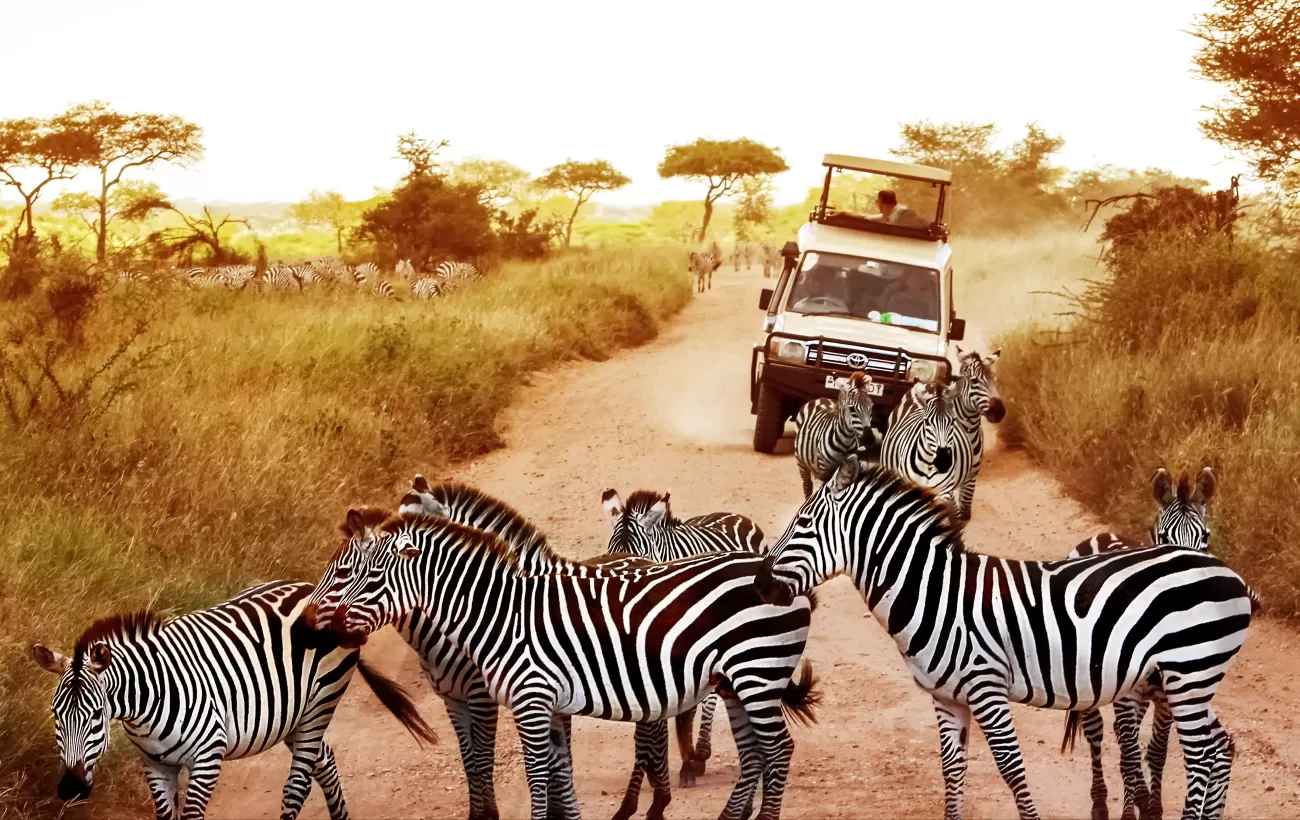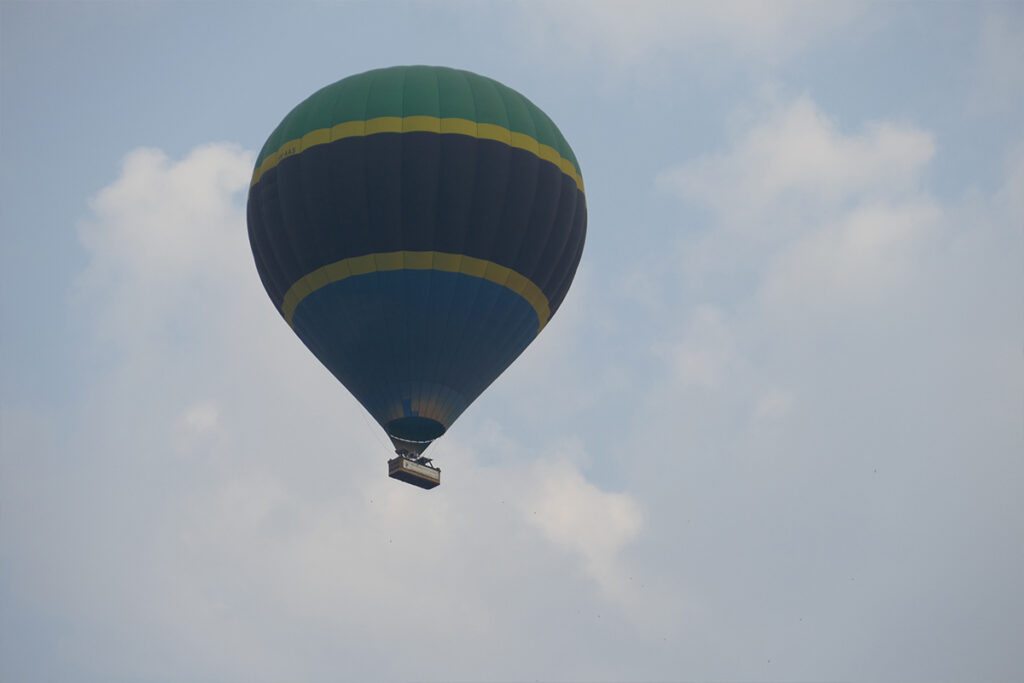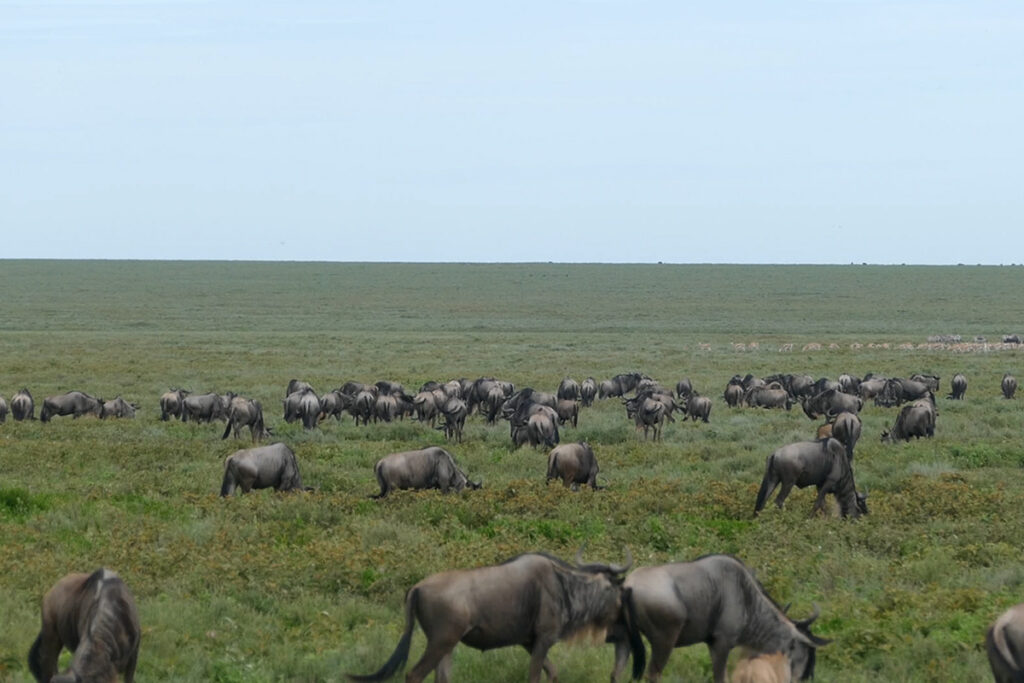Every year, over 1.5 million wildebeest embark on a perilous journey across the Serengeti, a spectacle often termed as one of the greatest natural wonders. This awe-inspiring migration is not merely an event but a testament to survival amidst the circle of life. Safari enthusiasts witness this primal march, a visual tapestry woven with the threads of instinct and endurance.
The Serengeti National Park, established in 1951, spans over 14,500 square kilometers and is a UNESCO World Heritage Site. It hosts approximately 3,000 lions, making it a critical bastion for predator-prey dynamics essential for ecological balance. The park’s extensive conservation efforts have allowed for sustainable tourism, thus ensuring the preservation of its diverse ecosystems for generations to come.

Exploring Serengeti National Park Safari
The Serengeti National Park offers a captivating adventure through breathtaking landscapes and abundant wildlife. Home to the iconic wildebeest migration, it’s a spectacle drawing global attention. In this park, you can witness majestic elephants and fierce lions roaming freely. The vast open plains provide excellent opportunities for wildlife photography. From acacia trees dotting the horizon to rivers flowing through, it’s a scene of natural beauty.
One of the highlights of the Serengeti safari is the Great Migration. This event involves over a million wildebeest and thousands of zebras traveling in search of fresh grazing land. It’s an incredible journey full of danger from predators and rough terrains. According to here is the post, this phenomenon remains a must-see for nature enthusiasts. The migration showcases the raw, untamed spirit of the African wilderness.
The rich biodiversity of Serengeti ensures every safari is unique. Besides the big cats, you’ll find giraffes gracefully towering over bushes and hippos basking in waterholes. Birdwatchers will enjoy spotting colorful species soaring in the skies. The park’s varied habitats, from grasslands to wooded savannas, sustain this diversity. Visitors often leave with memories of breathtaking sunrises and unforgettable wildlife encounters.
Careful planning enhances the Serengeti safari experience. Choosing the right season and an experienced guide makes a difference. Guided tours not only increase the chances of seeing rare animals but also educate on conservation efforts. For those seeking another unique adventure, according to the article, consider combining a safari with a walking tour in Tarangire. It adds a different dimension to absorbing nature’s wonders.
Wildlife Diversity and Abundance
The Serengeti National Park is a gem of biodiversity, housing an array of species that thrive in its unique ecosystem. Among the most notable are the African lions, often seen in prides lounging on the plains. The park is also home to the elusive leopard, spotted occasionally in tree branches. Tourists marvel at the sheer number of zebras and giraffes gracing the savannas. Each visit promises a different wildlife sighting.
Bird lovers will be thrilled by the Serengeti’s avian population. With over 500 bird species, there’s no shortage of colorful feathers and melodic songs. The park features everything from tiny sunbirds to majestic eagles. Birdwatching tours are popular and can be tailored to focus on rare species. Some of the must-see birds include the African fish eagle and the Kori bustard.
In addition to the big game, the Serengeti also supports numerous smaller mammals and reptiles. Hyenas often scavenge alongside jackals and vultures. Meanwhile, meerkats can be seen popping up from burrows, always on the lookout. During night drives, the elusive serval cat sometimes makes an appearance. Reptile enthusiasts can find various lizard and snake species in the park.
The abundance of wildlife is sustained by the park’s varied habitats. Grasslands, woodlands, and riverine forests create environments suitable for different species. These diverse habitats support a complex food web essential for ecological balance. Research projects often focus on how these species interact within their environments. Conservation efforts ensure that this biodiversity remains for future generations to appreciate.
The Phenomena of Great Migration
The Great Migration is an incredible natural event that occurs annually in the Serengeti National Park. Millions of wildebeest, zebras, and gazelles traverse the plains in search of greener pastures. This journey is both awe-inspiring and fraught with danger. Predators like lions and crocodiles lie in wait to catch the weak and vulnerable. It’s a dramatic spectacle of survival and instinct.
Timing is everything when it comes to witnessing the Great Migration. The migration usually peaks around June to September, when rivers must be crossed. These river crossings are some of the most thrilling episodes, often featured in wildlife documentaries. During this time, thousands of animals brave swift currents and lurking crocodiles. Watching this raw struggle is a highlight for many safari-goers.
Every stage of the migration plays a crucial role in the ecosystem. As animals move, they graze on vast expanses of grass, ensuring regrowth and maintaining the plains. They also disperse seeds, aiding plant diversity. Predators following the herd control populations and balance the ecosystem. It’s a cycle that has continued for centuries and remains pivotal for the Serengeti.
Planning a trip to view the Great Migration requires some preparation. Select a reliable tour operator knowledgeable about the best viewing spots. According to this post, considering the season is key to planning. Some operators offer special packages that coincide with peak migration periods. With the right planning, your experience will be unforgettable.
The Unique Ecosystem of Serengeti
The Serengeti’s ecosystem is exceptional, providing habitats for a vast array of wildlife. Its open plains, woodlands, and rivers support a diverse range of species. The park is famous for its wide expanses of grassy plains, where wildebeest and zebras roam freely. These animals keep the grasslands healthy by grazing, which promotes new growth. The delicate balance allows the ecosystem to thrive.
Seasonal rainfall patterns play a crucial role in shaping the Serengeti’s landscape. Rain showers transform the dry, dusty ground into lush, green pastureland. This change triggers the migration of herbivores in search of food and water. The wet season, generally from November to May, is vital for the survival of many species. Waterholes become bustling with life, attracting animals large and small.
Predators in the Serengeti also depend on this vibrant ecosystem. Lions, cheetahs, and leopards patrol the grasslands, hunting for their next meal. The abundance of prey keeps these big cats healthy and ensures their populations remain stable. Meanwhile, scavengers like hyenas and vultures clean up the remains, playing a vital role in the food chain. This interaction between predator and prey is vital for maintaining ecological balance.
The park’s varied terrain supports more than just grassland creatures. Wooded areas offer shelter for different species seeking refuge. Giraffes gracefully navigate these areas, feeding on leafy treetops. Smaller animals, such as antelopes and warthogs, find safety in these denser habitats. The Serengeti’s ecosystem is a dynamic web of life, interconnected and constantly evolving.
Despite its strength, the Serengeti ecosystem faces challenges from climate change and human activities. Conservation efforts are crucial to protect this delicate environment. Initiatives focus on sustainable tourism, habitat preservation, and wildlife protection. Education and awareness play key roles in engaging local communities. Through collaboration, the future of this unique ecosystem can be secured for generations.
Sustainability Efforts at Serengeti National Park
Serengeti National Park’s sustainability efforts focus on preserving wildlife and protecting natural habitats. The park works with local governments and international organizations to promote conservation practices. They aim to reduce the human footprint while enhancing biodiversity. This involves strategies like anti-poaching patrols and habitat restoration projects. By implementing these measures, they ensure the park remains vibrant and healthy.
Tourism plays a significant role in the Serengeti’s economy, so sustainable tourism practices are essential. The park encourages eco-friendly travel and responsible visitor behavior. This means tourists are educated on minimizing waste and respecting wildlife. Sustainable camps and lodges have been established to reduce environmental impact. These initiatives help maintain the park’s natural integrity for everyone to enjoy.
Community involvement is vital to the Serengeti’s ongoing sustainability. Local communities are actively engaged in conservation through education and job opportunities. Initiatives encourage locals to participate in wildlife protection and habitat management. This cooperation fosters a sense of pride and responsibility for the land. As a result, both the ecosystem and the communities living near the park benefit.
Education programs in schools raise awareness about the importance of conservation. Children are taught about the unique value of their natural surroundings. This education is crucial for developing future generations of conservationists. Outdoor activities and workshops make learning engaging and practical. The goal is to inspire curiosity and respect for the environment.
Technology also aids in sustainability efforts within the park. Drones and GPS systems are used for monitoring wildlife and tracking poachers. These tools provide valuable data to improve conservation strategies. They help ensure the park’s resources are managed efficiently. Embracing technology is a forward-thinking step in the park’s long-term sustainability goals.
Planning Your Serengeti Safari
When planning your Serengeti safari, choosing the right season is essential. The best time to visit is during the dry season from June to October. This period offers excellent wildlife viewing opportunities as animals gather around water sources. During this time, the Great Migration reaches its peak, making it an exhilarating experience. Remember to book well in advance, as this is a popular season.
Your safari experience greatly depends on selecting a reliable tour operator. Look for operators with knowledgeable guides who understand the park’s ecosystem. Experienced guides enhance your safari by providing insights into wildlife behavior and spotting rare animals. Many tours offer customized packages, catering to different interests and budgets. Research and read reviews to ensure you choose the best option.
Accommodations in the Serengeti range from luxury lodges to budget-friendly campsites. Luxury lodges provide comfort and stunning views, while campsites offer a more immersive experience. Each option has its unique appeal depending on your preference and budget. Consider the amenities you need and the kind of experience you want. Most accommodations are designed to blend with the natural surroundings.
Preparing for your Serengeti safari involves packing the right gear. Light, breathable clothing is ideal for the warm climate. Don’t forget a hat, sunglasses, and sunscreen to protect against the sun. Bring binoculars and a good camera to capture the impressive wildlife and scenery. It’s also wise to pack insect repellent and any necessary medications.
Understanding the park’s rules and guidelines ensures a safe and enjoyable trip. Visitors are advised to stay inside vehicles during game drives, keeping a safe distance from animals. Respecting these guidelines protects both you and the wildlife. Follow instructions from your guide to maximize your experience and safety. This way, you help preserve the pristine beauty of the Serengeti for future visitors.

Frequently Asked Questions
Explore the wonders of the Serengeti and immerse yourself in this unique ecosystem. Discover answers to common queries about wildlife, conservation, and planning your visit.
1. What is the best time to visit Serengeti National Park?
The best time to visit Serengeti National Park is during the dry season, from June to October. This period offers great opportunities to witness the incredible Great Migration, where thousands of wildebeest and zebras traverse the plains. The dry conditions also mean animals often gather at waterholes, making them easier to spot on safaris.
While the dry season boasts excellent wildlife viewing, the wet season from November to May showcases the park’s lush landscape. Migrating birds join the scene, and you might see newborn animals. Both seasons have unique experiences to offer, catering to different interests and adding variety to your safari adventure.
2. How does Serengeti National Park support wildlife conservation?
Serengeti National Park supports wildlife conservation through sustainable tourism and strict anti-poaching policies. The park collaborates with local communities and international organizations to maintain its rich biodiversity. These partnerships focus on protecting habitats, safeguarding endangered species, and promoting eco-friendly travel practices.
By involving local communities, the park fosters a sense of responsibility and pride for the environment. Education programs teach about balanced ecosystems and the importance of conservation. Visitors to the park are encouraged to follow guidelines that ensure minimal disturbance to wildlife, contributing to ongoing preservation efforts.
3. What type of animals can you see on a Serengeti safari?
A Serengeti safari offers the chance to see diverse wildlife, including the “Big Five”: lions, elephants, buffalo, leopards, and rhinoceros. Additionally, the park is a haven for cheetahs, giraffes, zebras, and countless bird species. Animal activity varies depending on the time of day and year, providing a dynamic experience.
The Great Migration is a highlight, featuring wildebeest and zebras moving en masse across the park. Beyond mammals, birdwatching opportunities are abundant, with over 500 species recorded. From vibrant bee-eaters to powerful eagles, the skies are filled with marvels, ensuring every safari is memorable.
4. What should you pack for a Serengeti safari?
When packing for a Serengeti safari, prioritize light, breathable clothing and comfortable walking shoes. Essential items include a wide-brimmed hat, sunscreen, and sunglasses to protect against the sun’s harsh rays. Binoculars and a high-quality camera are also recommended for spotting and capturing wildlife.
Insect repellent is advised to ward off potential bug bites, especially during sunrise and sunset. It’s crucial to bring any personal medications, along with a small first-aid kit. Layered clothing is helpful as temperatures vary throughout the day, ensuring comfort during your adventure.
5. How can technology aid in wildlife monitoring in Serengeti National Park?
Technology plays a vital role in wildlife monitoring at Serengeti National Park by providing data on animal movements and habitats. Tools like GPS tracking and drones help researchers and conservationists gather real-time information. This assists in studying animal behavior and recognizing patterns crucial for long-term conservation strategies.
By employing technology, the park can efficiently track endangered species and identify potential threats. These advancements support anti-poaching efforts, ensuring the safety and sustainability of wildlife populations. Moreover, adopting technology underscores the park’s commitment to integrating modern methods with traditional conservation practices.



